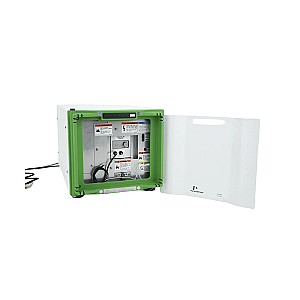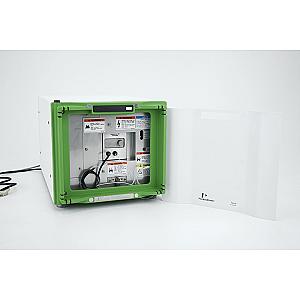PerkinElmer's Flexar LC FL is a high-sensitivity fluorescence detector designed for liquid chromatography (HPLC) systems. With its wide wavelength range and ability to detect weakly fluorescent analytes, it is ideal for demanding applications such as pharmaceutical, environmental and food analysis. Integrated into the modular Flexar platform, it offers extensive compatibility with existing HPLC systems while ensuring accurate quantitative results. Its flexibility, fmol-level sensitivity and software-controlled variable filters make it a state-of-the-art analytical tool.
Flexar LC FL Fluorescence Detector - Perfect Condition





Offer Details
Accessories :
Perkin Elmer Flexar LC FL HPLC Detector Chromatography + Standard Cell
Options :
8858
Description
Flexar LC FL: High-performance fluorescence detector for HPLC
PerkinElmer's Flexar LC FL is a fluorescence detector for analytical laboratories using high-performance liquid chromatography (HPLC). Designed to meet increasing demands for sensitivity and accuracy, it enables the detection of compounds at very low concentrations, even when they exhibit minimal fluorescence. This detector is particularly suitable for applications where detection limits are critical, such as in the pharmaceutical industry, environmental monitoring and food analysis.
Thanks to its xenon light source and extended wavelength range from 200 to 900 nm, the Flexar LC FL offers exceptional flexibility in the choice of excitation and emission wavelengths. The variable filters, which are fully software-controlled, allow rapid adaptation to the specific requirements of each analytical method. This ability to customise the optical parameters ensures optimum sensitivity, even for weakly fluorescent analytes.
Modular integration and extensive compatibility
The Flexar LC FL integrates seamlessly into PerkinElmer's modular Flexar platform, allowing for customised configuration to meet laboratory requirements. It is compatible with standard, semi-micro and micro flow cells, offering flexibility in the choice of sample volumes and flow rates. This modularity also facilitates integration into existing HPLC systems, whether from the Flexar range or other manufacturers, thanks to extensive connectivity via USB, LAN or analogue output.
Data communication can be adapted to the chosen configuration, enabling seamless integration into laboratory IT environments. The accompanying software provides an intuitive interface for parameter control, data collection and result analysis, ensuring a smooth and efficient user experience.
Critical applications and analytical performance
The Flexar LC FL is designed to excel in applications where accuracy and sensitivity are paramount. In pharmacology, it enables the detection of trace amounts of active substances or metabolites. In environmental applications, it facilitates the monitoring of contaminants at very low concentrations. In the food industry, it contributes to quality control by detecting fluorescent residues or additives.
Its sensitivity in the fmol range, depending on the configuration and settings, makes it an indispensable tool for demanding quantitative analyses. The stability of the light source and the precision of the filters ensure high reproducibility of results, which is essential for certified laboratories and regulatory studies.
Features
- Ultra-sensitive detection for weakly fluorescent analytes
- Software control of wavelengths and filters
- Easy integration into existing HPLC systems
- Compatibility with multiple types of flow cells
- Flexible communication: USB, LAN, analogue
- Modular Flexar platform for customised configuration
- Intuitive software for data control and analysis
Technical Details
- Detection type: Fluorescence
- Light source: Xenon lamp
- Wavelength range: 200–900 nm
- Ex/emission filters: Variable, software-controlled
- Sensitivity: Fmol range (depending on configuration)
- Cell compatibility: Standard, semi-micro, micro (optional)
- Data communication: USB / LAN (depending on configuration)
- System compatibility: PerkinElmer Flexar HPLC series, other systems via software
- Dimensions (W×D×H): Approx. 40 × 45 × 20 cm
- Weight: Approx. 12 kg
- Power supply: 100–240 V AC, 50/60 Hz
- Interfaces: USB, LAN, analogue output
Compatible Accessories
- Semi-micro and micro flow cells
- Maintenance kits for xenon lamps
- USB and LAN communication cables
- PerkinElmer control and analysis software
- Mounting bracket for system integration
- Additional optical filters for specific applications